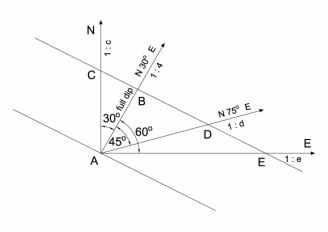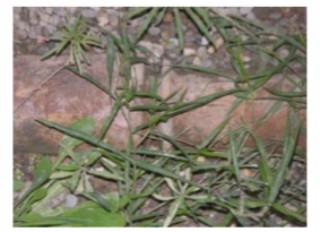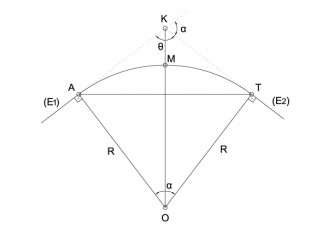
Contents [show]
Calculate the surface area of a simple (non-self-intersecting) n sides polygonal shape with known Cartesian coordinates in the plane for all of its vertices. The main concept of the method is to divide the main polygon in n trapezoids and to cross-multiply corresponding coordinates to find the area enclosing the polygon (green trapezoids), and subtract from it the surrounding trapezoids (red) to find the area of the polygon within. It is also called the shoelace formula because of the constant cross-multiplying for the coordinates making up the polygon, like tying shoelaces. Mainly applicable in topography.
Known values: Cartesian coordinates of all vertices (x1, y1), (x2, y2), …(xn, yn).
Solution: Area A of simple polygonal shape.

1. Subtract surrounding trapezoids (red) from encompassing trapezoids (green).

2. In general:

where
- A is the area of the polygon,
- n is the number of sides (or vertices) of the polygon,
- xi, yi, i=1, 2, …, n are the Cartesian coordinates of polygon’s vertices, and
- +1 or -1 define next or previous vertex from i vertex.
If vertices are numbered clockwise, the determinants of the expressions above are positive whereas if numbered counterclockwise, they are negative in which case absolute values should be considered.
Selected Topics
Want to read more like this?

Calculation example - Find the coordinates of the intersection of two lines
Jan, 20, 2020 | EducationCalculate the coordinates of the intersection of two lines given the coordinates of four stations....

Calculation example - Find the coordinates of the intersection of two lines
Jan, 20, 2020 | EducationCalculate the coordinates of the intersection of two lines given their bearings from two known stati...

Calculation example - Resections
Oct, 18, 2019 | EducationCalculate the coordinates of a distant point Tn, referencing measured angles and coordinates of four...

Calculation example – Similarity Transformation in 2-D space
Sep, 22, 2017 | EducationCalculate the coordinates of a known point P in an orthogonal coordinate system to a reference ortho...

Calculation example – Volume Calculation – Ramp Reaching a Vertical Wall
Sep, 22, 2017 | EducationCalculate the volume included between a horizontal plane, a ramp (inclination 1:m, side slopes 1:n)...

Calculation example - Calculate the height of an object when its top and bottom are visible but inaccessible #2
Oct, 18, 2019 | EducationCalculate the height of an object from a baseline when its top and bottom is visible but not accessi...

Calculation example – Re-establishing an inaccessible Reference Station
Jan, 16, 2019 | EducationRe-establish the reference station T (inaccessible by the surveyor) onto position B and calculate th...

Calculation example – The intersection method
Sep, 22, 2017 | EducationDetermine the coordinates of an unknown point M (impossible to occupy) visible from two (2) previou...

Calculation example - Find path gradients in different directions, given the rate and direction of full dip
Nov, 20, 2020 | EducationGiven the rate and direction of full dip of a plane or seam, find path gradients in three different...
Trending

Gauss's Area Calculation Formula

Calculation example - Three Point Resection

Calculation example - Determine the water content within a soil sample

Kallanai Dam (Grand Anicut)

Minoan Water Harvesting and Distribution (Terracotta Pipes)

Calculation example – Road design– Circular arc implementation

Calculation example - Calculate the height of an object when its base is inaccessible

